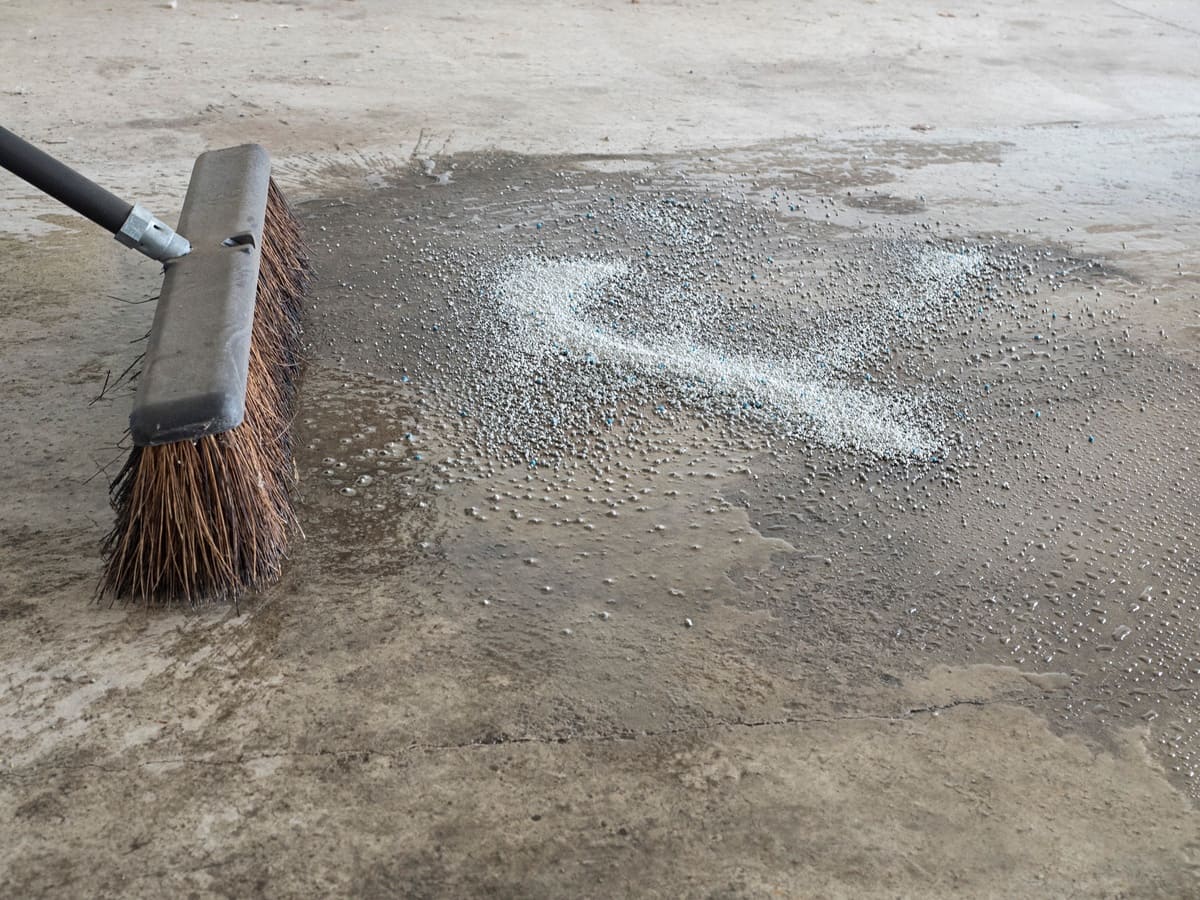

Articles
How To Clean Oil Off The Floor
Modified: October 21, 2024
Looking for articles on how to clean oil off the floor? Discover effective tips and tricks to remove oil stains and restore your floor's shine.
(Many of the links in this article redirect to a specific reviewed product. Your purchase of these products through affiliate links helps to generate commission for Storables.com, at no extra cost. Learn more)
Introduction
Oil spills on the floor can be a frustrating and unsightly mess. Whether it’s from cooking, a leaky machine, or a mechanical mishap, cleaning oil off the floor is essential not only for aesthetic reasons but also to prevent slip and fall accidents. However, with the right knowledge and supplies, you can effectively clean oil off the floor and restore its cleanliness and safety.
In this article, we will guide you through the process of cleaning oil off the floor. We will discuss the different types of oil stains and the best techniques to eliminate them. Additionally, we will provide tips on preventing future oil stains and maintaining a clean floor surface. So, let’s dive in and learn how to tackle those stubborn oil stains!
Key Takeaways:
- Say goodbye to stubborn oil stains by understanding the type of oil, gathering the right supplies, and following a step-by-step cleaning process. Keep your floor clean and safe with these expert tips!
- Prevent future oil stains by establishing a regular cleaning routine, using protective measures, and promptly wiping up spills. Enjoy a pristine floor with these effective preventive measures!
Read more: How To Clean Cooking Oil Off Floor
Understanding the type of oil
Before you start cleaning an oil stain, it’s important to understand the type of oil you are dealing with. Different oils have different properties and may require specific cleaning methods. Here are some common types of oil stains you may encounter:
- Cooking Oil: This includes oils like olive oil, vegetable oil, and canola oil. Cooking oil stains are typically greasy and may have a strong odor.
- Motor Oil: Motor oil stains are often found in garages or driveways where cars are parked. They are dark in color and have a thick consistency. Motor oil stains may also contain other substances like coolant or brake fluid.
- Garden Oil: This includes oils used in gardening, such as lubricating oils for garden tools or plant oils like neem oil. Garden oil stains may be lighter in color but can still leave a greasy residue.
- Industrial Oils: These are oils commonly used in factories or industrial settings. Examples include hydraulic oil, machine oil, or cutting oil. Industrial oil stains are often thicker and more difficult to remove.
Understanding the type of oil will help you choose the appropriate cleaning method and supplies. For instance, cooking oil stains can usually be removed with household items, while motor oil or industrial oil stains may require specialized cleaning agents.
It’s also important to consider the surface you’re cleaning. Different flooring materials, such as tile, wood, concrete, or carpet, may react differently to various cleaning agents. Always check the manufacturer’s recommendations before applying any cleaning solution to avoid damaging the floor.
Now that we have a better understanding of the different types of oil stains, let’s move on to the next step in the cleaning process: gathering the necessary cleaning supplies.
Gathering the necessary cleaning supplies
Before you begin tackling the oil stain, it’s important to gather all the necessary cleaning supplies. This will ensure that you have everything you need to effectively remove the oil and prevent any further damage to your floor. Here’s a list of essential cleaning supplies you may need:
- Absorbent materials: This can include items like paper towels, rags, or absorbent powders like baking soda or cornstarch. These materials are crucial for absorbing excess oil before applying a cleaning solution.
- Cleaning solutions: The type of cleaning solution you’ll need will depend on the type of oil stain and the flooring material. For general oil stains on hard surfaces, you can create a homemade solution by mixing warm water with dish soap or vinegar. If you’re dealing with a stubborn or specialized oil stain, consider using a commercial degreaser or oil stain remover specifically designed for your flooring material.
- Safety equipment: Cleaning oil stains can be messy, so it’s important to protect yourself. Wear gloves to prevent direct contact with the oil or cleaning solutions, and consider using eye protection if there’s a risk of splashing. Additionally, ensure that the area is well-ventilated to avoid inhaling any fumes.
- Scrub brush or sponge: Having a scrub brush or sponge with a firm bristle will help you agitate the oil stain and lift it from the surface. Make sure to choose a brush or sponge appropriate for your flooring material to prevent any scratches or damage.
- Bucket or spray bottle: These will be used to mix and apply the cleaning solution. A bucket is useful for larger spills or when you need to soak the cleaning material, while a spray bottle can be handy for targeted application or smaller areas.
- Protective covers: If you’re cleaning a large area or if the oil stain is particularly stubborn, you may want to consider using protective covers for the surrounding flooring or furniture. Plastic tarps or drop cloths can help prevent any accidental damage or staining.
Having all these cleaning supplies ready and easily accessible will make the cleaning process smoother and more efficient. Now that you have everything you need, it’s time to prepare the floor for cleaning.
Preparing the floor for cleaning
Before you start tackling the oil stain on your floor, it’s important to prepare the area to ensure maximum effectiveness of your cleaning efforts. Preparing the floor involves a few simple steps that will help you remove any surface dirt and create an optimal environment for the cleaning process. Here’s what you need to do:
- Remove any loose debris: Before applying any cleaning solution, it’s essential to remove any loose debris from the area. Use a broom, dustpan, or vacuum cleaner to sweep or pick up any dirt, dust, or larger particles. This will prevent them from further spreading or getting in the way during the cleaning process.
- Blot or absorb excess oil: If the oil stain is fresh and there’s still excess oil on the surface, use absorbent materials like paper towels, rags, or absorbent powders to blot or absorb as much oil as possible. Gently press the materials onto the stain, being careful not to spread it further. Repeat this step until no more oil can be absorbed.
- Test the cleaning solution: Before applying the cleaning solution to the entire stain, it’s essential to test it in an inconspicuous area of the floor. Apply a small amount of the solution and observe the reaction. If there’s any discoloration or damage, choose an alternative cleaning solution or consult a professional.
- Protect nearby surfaces: If the oil stain is close to walls, furniture, or other surfaces that you want to protect, consider using protective covers like plastic tarps or drop cloths. This will prevent any cleaning solution or accidental spills from damaging or staining adjacent areas.
- Ventilate the area: Cleaning solutions can sometimes emit strong odors or fumes. Ensure proper ventilation by opening windows, using fans, or turning on air conditioning to create airflow throughout the space. This will help dissipate any unpleasant smells and maintain a fresh environment.
By following these simple steps to prepare the floor, you’ll be ready to tackle the oil stain with the appropriate cleaning solution. Next, we’ll move on to the process of removing oil stains from the floor.
Removing oil stains from the floor
Now that you have prepared the floor, it’s time to start removing the oil stain. The method you choose will depend on the type of oil and the flooring material. Here are some general steps to help you effectively remove oil stains from the floor:
- Apply the cleaning solution: Start by applying the appropriate cleaning solution onto the oil stain. You can use a sponge, cloth, or spray bottle to apply the solution evenly. Be sure to cover the entire stain and allow the cleaning solution to penetrate the oil for a few minutes.
- Agitate the stain: Once the cleaning solution has had time to work, use a scrub brush or sponge with firm bristles to agitate the oil stain. Scrub the area gently in a circular motion, focusing on the stained area. This will help to break up the oil and loosen its grip on the floor.
- Repeat if necessary: For stubborn oil stains, you may need to repeat the application of the cleaning solution and agitation process. Allow the solution to sit for a few minutes each time before scrubbing again. This can help to fully remove the oil from the floor.
- Rinse with clean water: Once you have successfully removed the oil stain, rinse the area with clean water. This will help to remove any remaining cleaning solution and residual oil. Use a mop, sponge, or clean cloth dampened with water to rinse the floor thoroughly. Be sure to wring out the mop or cloth well to avoid excessive moisture on the floor.
- Check for any remaining stains: After rinsing, inspect the floor for any remaining oil stains. If there are still traces of the stain, repeat the cleaning process until the stain is completely gone.
Remember to follow the instructions provided with the cleaning solution and consider any specific recommendations for your flooring material. Some types of flooring, such as carpets or delicate surfaces, may require special care or professional assistance to remove oil stains effectively.
Once you have successfully removed the oil stain, it’s time to clean the entire floor surface to ensure a uniform appearance. We’ll cover this important step in the next section.
Use a degreaser or a mixture of hot water and dish soap to clean oil off the floor. Scrub the area with a brush and then rinse with clean water. Repeat if necessary.
Read more: How To Clean Wax Off Floor
Cleaning the floor surface
After removing the oil stain, it’s important to clean the entire floor surface to ensure a uniform appearance and remove any residue or cleaning solution. Cleaning the floor surface will leave it looking fresh and prevent any slippery spots. Here’s what you need to do:
- Prepare a cleaning solution: Depending on your flooring material, prepare a suitable cleaning solution. For hard surfaces like tile or laminate, you can use a mild detergent mixed with warm water. For wooden floors, use a wood floor cleaner recommended by the manufacturer.
- Apply the cleaning solution: Using a mop, sponge, or microfiber cloth, apply the cleaning solution to the floor surface. Work in small sections, starting from one corner and moving systematically across the floor. Be sure to wring out your mop or cloth well to avoid excessive moisture on the floor.
- Scrub the floor: Using a scrub brush or mop with soft bristles (for delicate surfaces), scrub the floor gently. Pay extra attention to any areas that may have residual oil or cleaning solution. This step will help remove any lingering dirt, grime, or film on the floor surface.
- Rinse with clean water: Once you have cleaned the entire floor surface, thoroughly rinse it with clean water. This will remove any remaining cleaning solution and leave the floor looking fresh and residue-free.
- Dry the floor: After rinsing, use clean towels or a dry mop to dry the floor surface. Ensure that it is completely dry to prevent any slippery conditions or water damage to the flooring material.
- Inspect the floor: Take a final look at the floor to ensure that it is clean and free from any remaining stains, streaks, or residue. If necessary, repeat the cleaning process in specific areas until you’re satisfied with the results.
By following these steps, you’ll be able to clean the entire floor surface and maintain its cleanliness. Remember to follow any specific guidelines provided by the flooring manufacturer and use suitable cleaning products for your specific flooring material.
Now that you have successfully cleaned the floor surface, let’s move on to the next step: rinsing and drying the floor.
Rinse and dry the floor
After cleaning the floor surface, it’s important to rinse off any remaining cleaning solution and dry the floor thoroughly. Rinsing and drying the floor will ensure that no residue or moisture is left behind, leaving your floor clean, safe, and ready to use. Here are the steps to follow:
- Rinse with clean water: Using a mop, sponge, or clean cloth, rinse the floor with clean water. This will help remove any lingering cleaning solution or residue that may be left on the floor surface. Ensure that you wring out the mop or cloth well to avoid excessive moisture.
- Change the water frequently: If you’re cleaning a large area, it’s important to change the water frequently to prevent spreading dirt or residue from one section of the floor to another. This will help maintain a clean and streak-free result.
- Dry the floor: Once you have finished rinsing, it’s time to dry the floor. Use clean towels, a dry mop, or a floor fan to remove any excess moisture. Pay attention to corners, edges, and other areas where water may accumulate. Drying the floor thoroughly will prevent any slipping hazards and avoid potential water damage to the floor.
- Avoid walking on wet floor: While drying the floor, it’s important to avoid walking on it until it is completely dry. This will prevent any accidental slips or footprints that could spoil your work. Place warning signs or barriers if necessary to indicate that the floor is wet and should be avoided.
- Check for any missed spots: Once the floor is dry, take a moment to inspect it for any missed spots or water marks. If you notice any, go back and address them using a clean cloth or mop dampened with water to ensure a uniform appearance.
- Reassess shine or finish: If your floor has a special finish or shine, you may want to reassess its condition after cleaning. If necessary, apply a floor wax or polish recommended for your flooring material to restore its luster and protect the surface.
By properly rinsing and drying the floor, you’ll complete the cleaning process and ensure that your floor is clean, dry, and ready to be enjoyed. Now that the floor is clean, let’s explore some tips on how to prevent future oil stains.
Preventing future oil stains
Once you have successfully cleaned the oil stains from your floor, it’s important to take preventive measures to avoid future spills and stains. By following these tips, you can maintain a clean and oil-free floor for the long term:
- Regular maintenance: Establish a regular cleaning routine to keep your floor clean and in good condition. Sweep or vacuum regularly to remove any dirt, dust, or debris that can act as a magnet for oil stains.
- Use floor mats or rugs: Place floor mats or rugs in high traffic areas, such as entrances and cooking areas. These can help trap dirt and oil before it reaches your floor and prevent oil stains from occurring.
- Wipe up spills immediately: Accidents happen, and if there’s a spill, whether it’s cooking oil, motor oil, or any other liquid, it’s crucial to wipe it up immediately. The longer the oil sits on the floor, the harder it’ll be to remove and the more likely it’ll leave a stain.
- Use protective measures: For areas where you are more prone to spills or leaks, consider using protective measures such as drip trays, absorbent pads, or floor coverings like plastic sheets. These can help contain any spills and prevent them from spreading to the floor.
- Avoid over-applying oil-based products: When using oil-based products like wood polish or furniture oil, be mindful not to over-apply as this can lead to excess oil on the floor. Follow the product instructions and use sparingly to prevent any accidental spills or stains.
- Properly dispose of oily materials: When working with oily materials or liquids, ensure that you dispose of them properly. Check local regulations for guidelines on how to dispose of oil or hazardous substances to prevent accidental spills or leaks that could damage your floor.
- Regularly inspect and maintain machinery: If you have machinery or equipment that uses oil, make sure to inspect and maintain them regularly. Address any leaks or drips promptly to prevent oil from spreading onto your floor.
- Consider preventive coatings: Depending on your flooring material, you may explore the option of applying a preventive coating or sealant to your floor. This can act as a barrier against oil stains and make cleaning easier in the future. Consult with a professional or refer to the manufacturer’s recommendations for the best approach.
By implementing these preventive measures, you can reduce the chances of oil stains on your floor and maintain its cleanliness. Remember, prevention is key when it comes to keeping your floor looking its best.
Now that you have learned how to clean oil stains from your floor and prevent future incidents, you are well-equipped to maintain a clean and inviting space. So go ahead and enjoy your spotless floor!
Note: It’s important to always refer to the manufacturer’s recommendations for cleaning and maintaining your specific type of flooring to avoid any potential damage.
Providing this article does not constitute professional advice. Always consult with a professional for guidance on your specific situation.
Conclusion
Cleaning oil off the floor can be a challenging task, but with the right knowledge and supplies, you can effectively remove oil stains and restore the cleanliness and safety of your floor. By understanding the type of oil, gathering the necessary cleaning supplies, and preparing the floor for cleaning, you set the stage for successful oil stain removal.
The process of removing oil stains from the floor involves applying the appropriate cleaning solution, agitating the stain, rinsing with clean water, and thoroughly drying the floor. By following these steps and ensuring the floor surface is clean and dry, you can achieve remarkable results.
Preventing future oil stains is equally important to maintain a pristine floor. Establishing a regular cleaning routine, using protective measures, promptly wiping up spills, and practicing proper disposal of oily materials are effective preventive measures. Additionally, using floor mats or rugs in high traffic areas and considering preventive coatings can provide an added layer of protection.
Remember, always follow the manufacturer’s recommendations for cleaning and maintaining your specific type of flooring to avoid any potential damage. If you’re unsure about the best approach or dealing with a stubborn oil stain, don’t hesitate to consult a professional for guidance.
By following these tips and techniques, you can enjoy a clean, oil-free floor that not only looks great but also enhances the safety and ambiance of your space. So, roll up your sleeves, gather your cleaning supplies, and say goodbye to those pesky oil stains!
Frequently Asked Questions about How To Clean Oil Off The Floor
Was this page helpful?
At Storables.com, we guarantee accurate and reliable information. Our content, validated by Expert Board Contributors, is crafted following stringent Editorial Policies. We're committed to providing you with well-researched, expert-backed insights for all your informational needs.
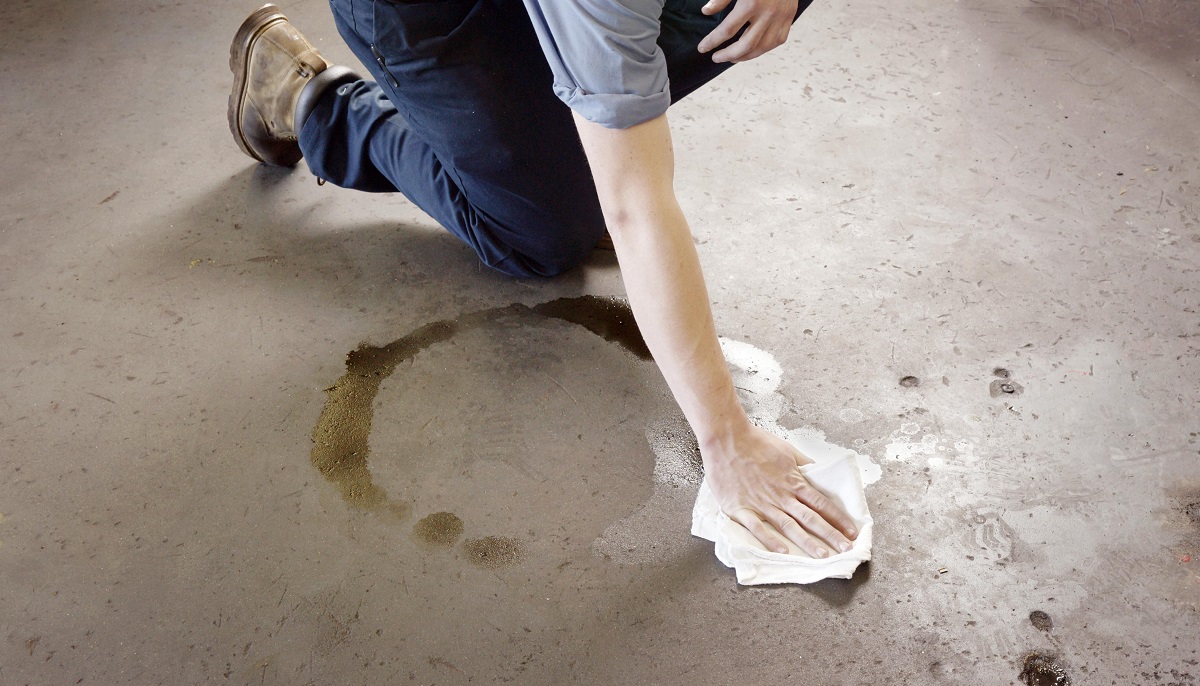
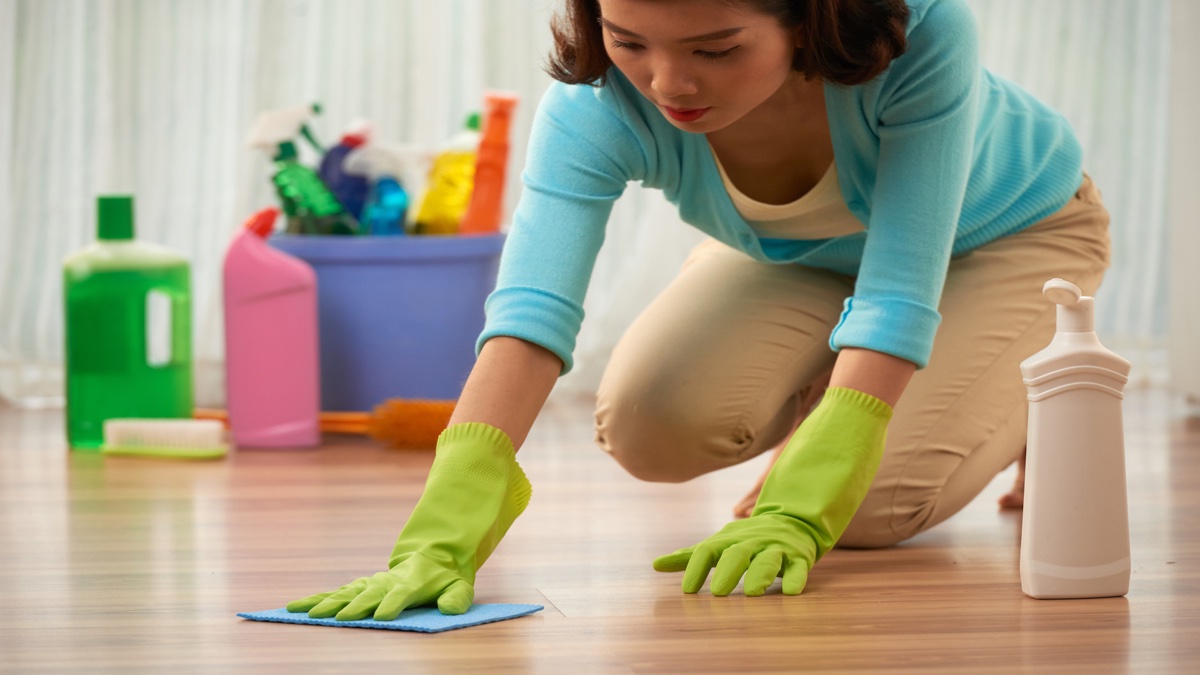
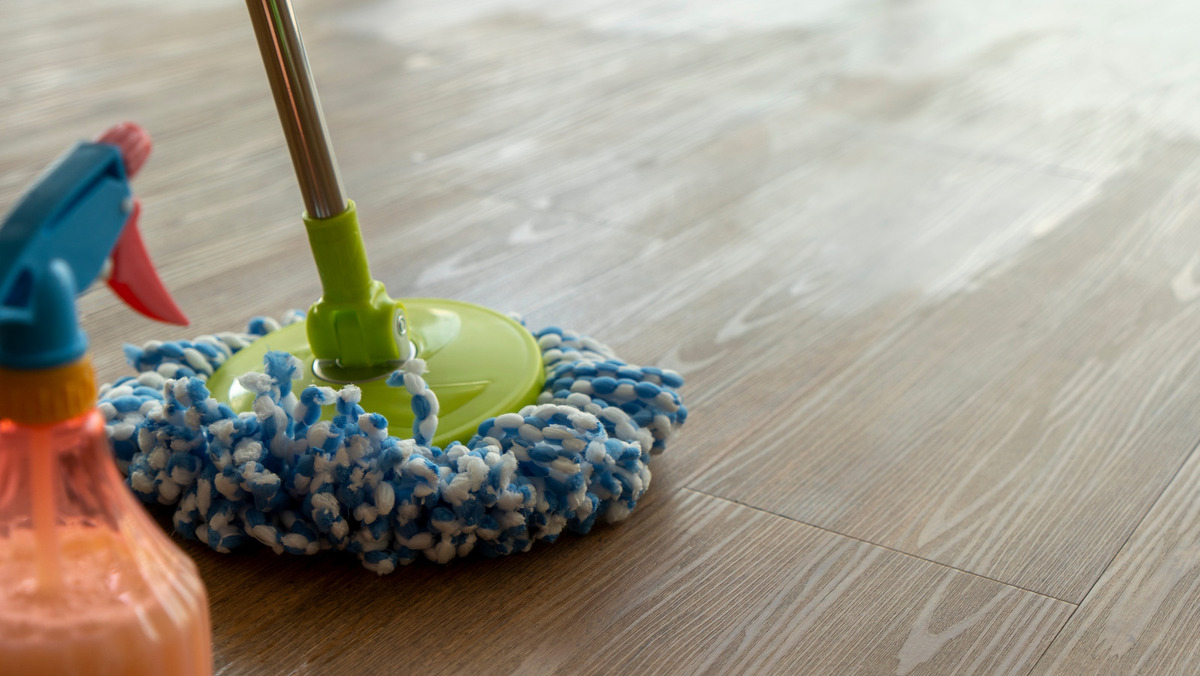
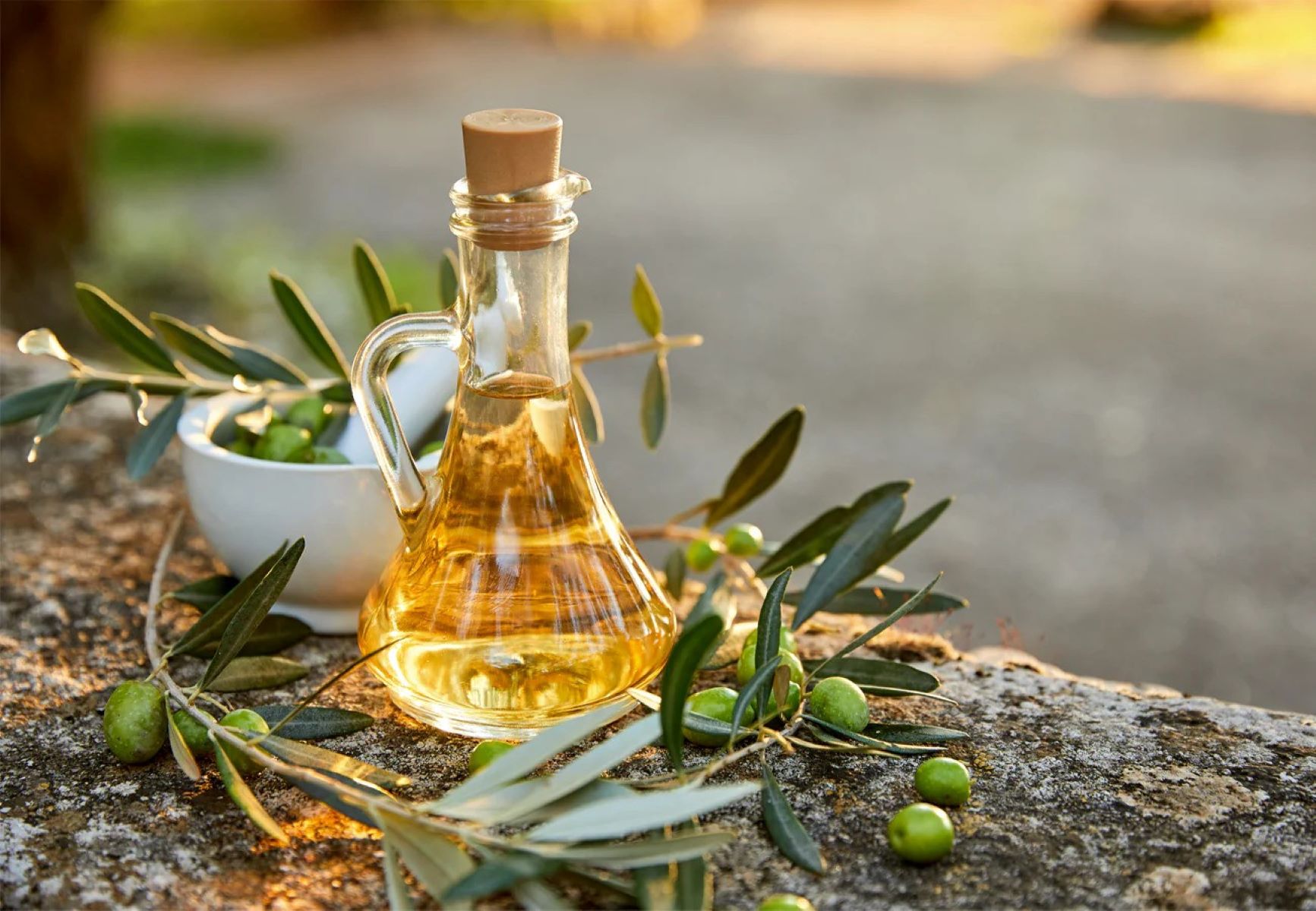

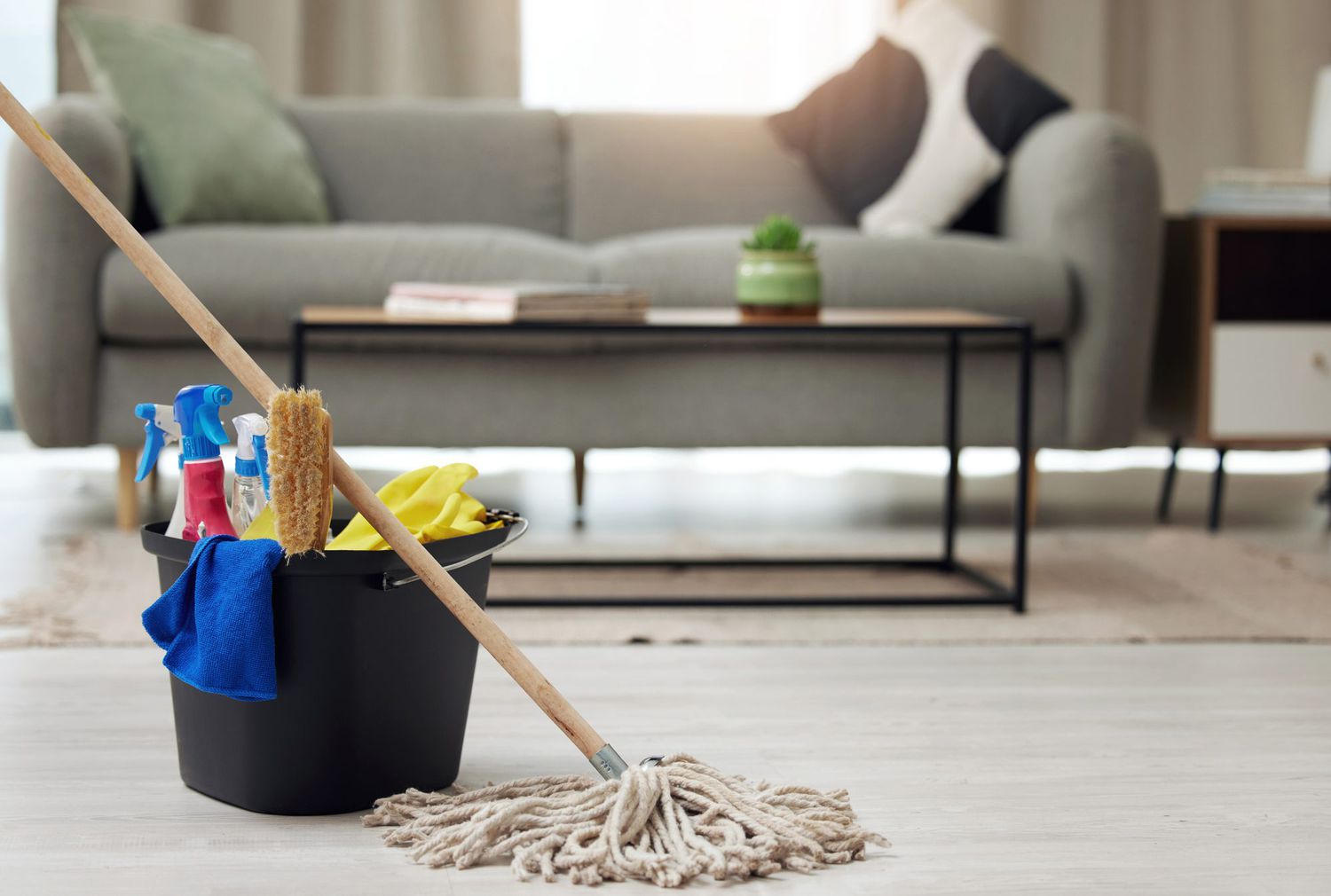
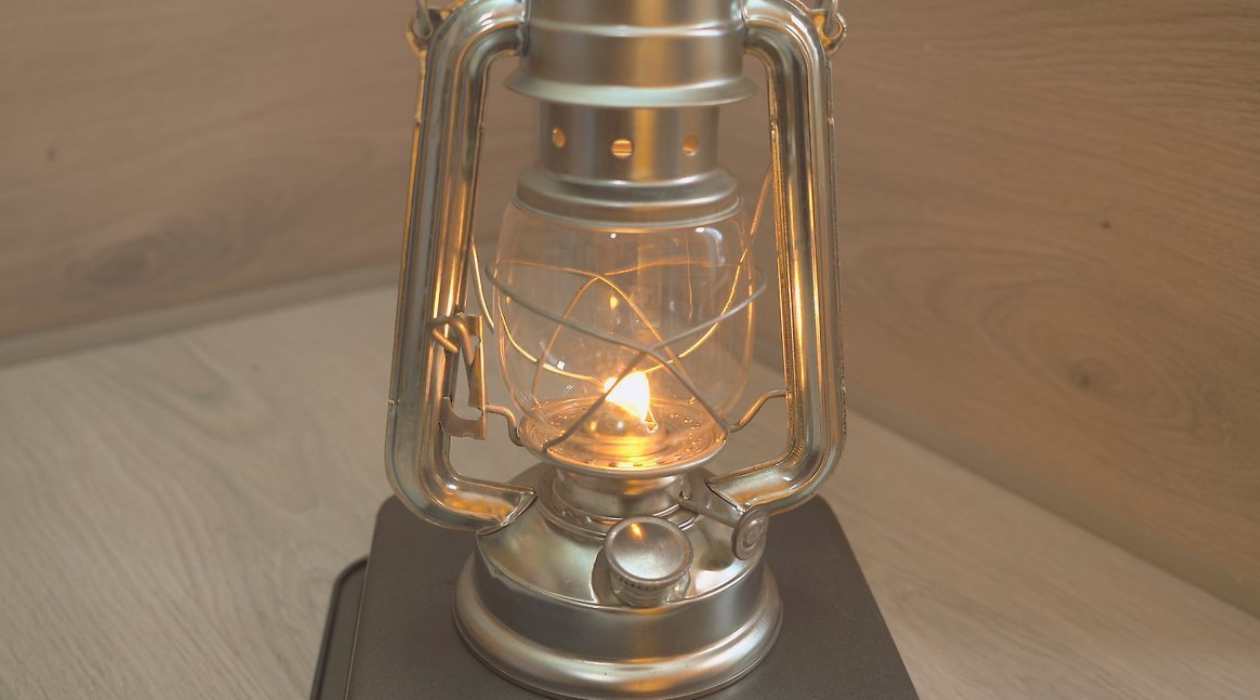
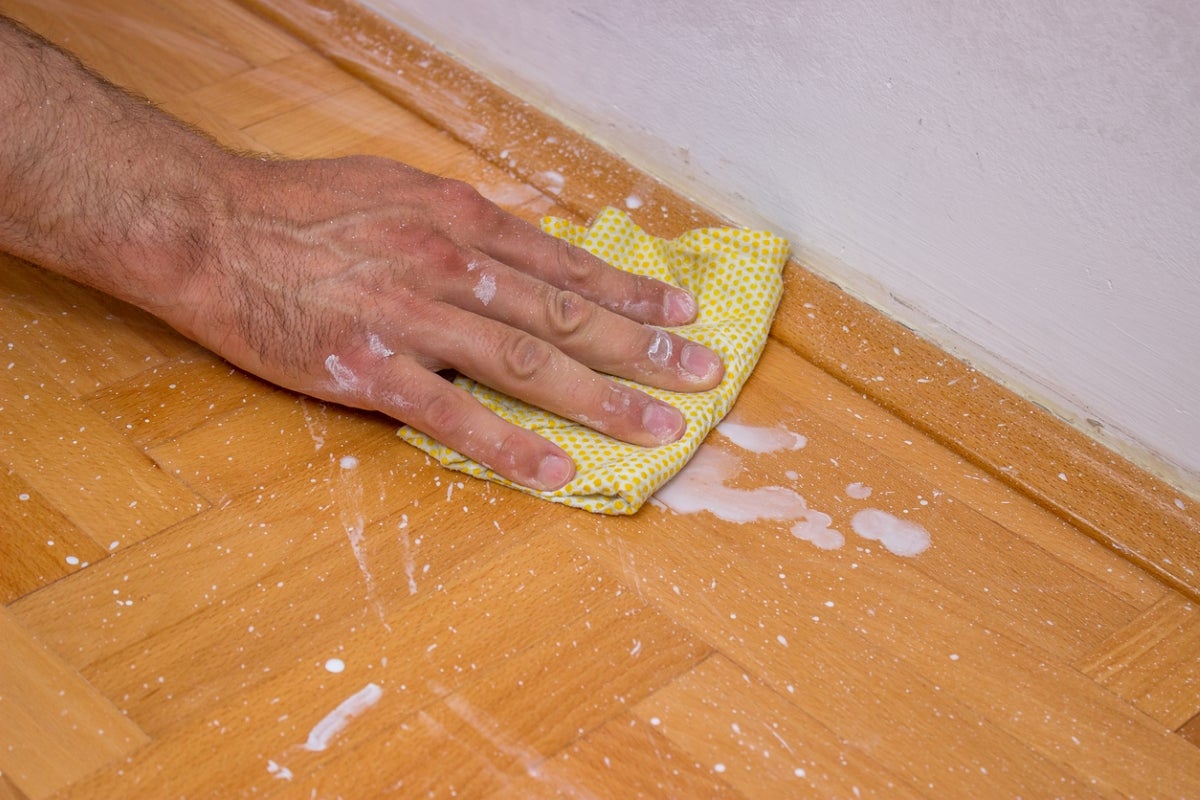
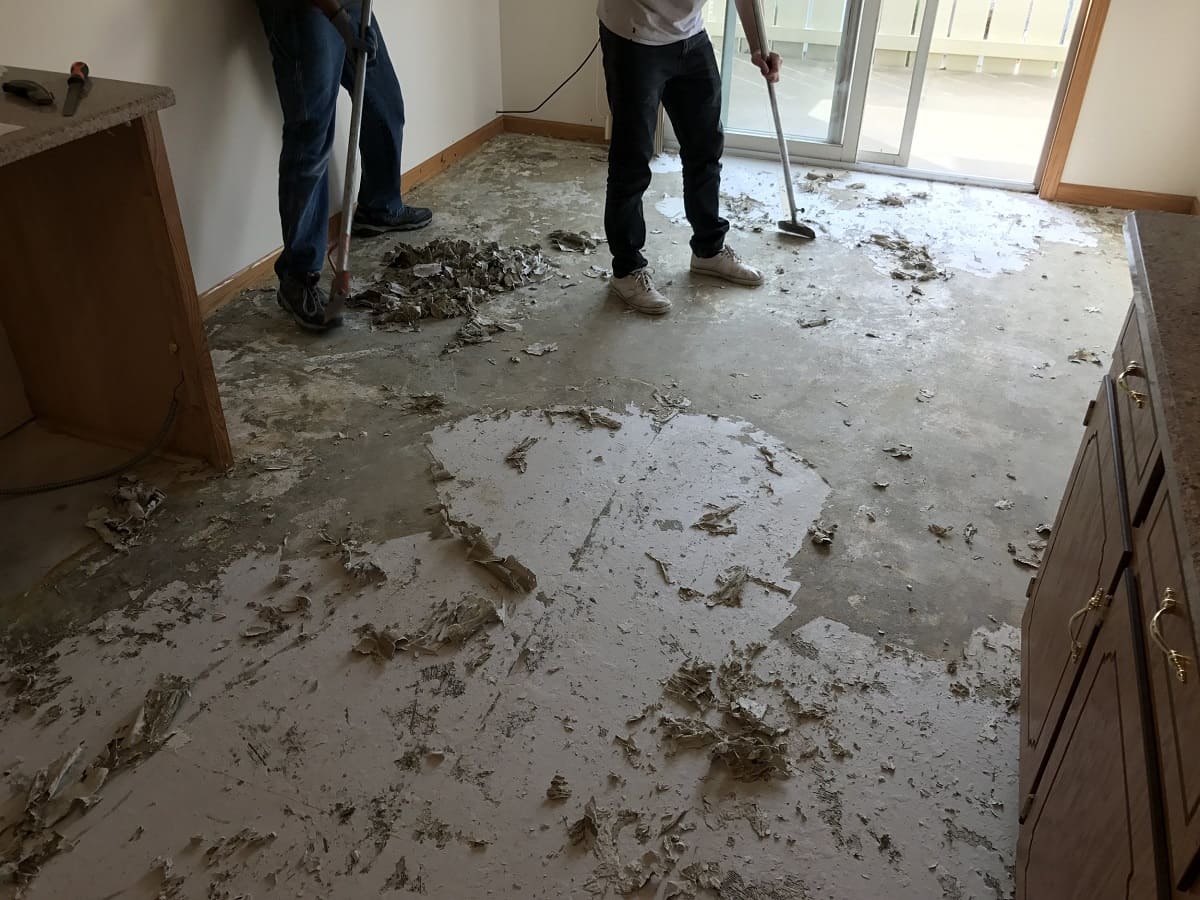

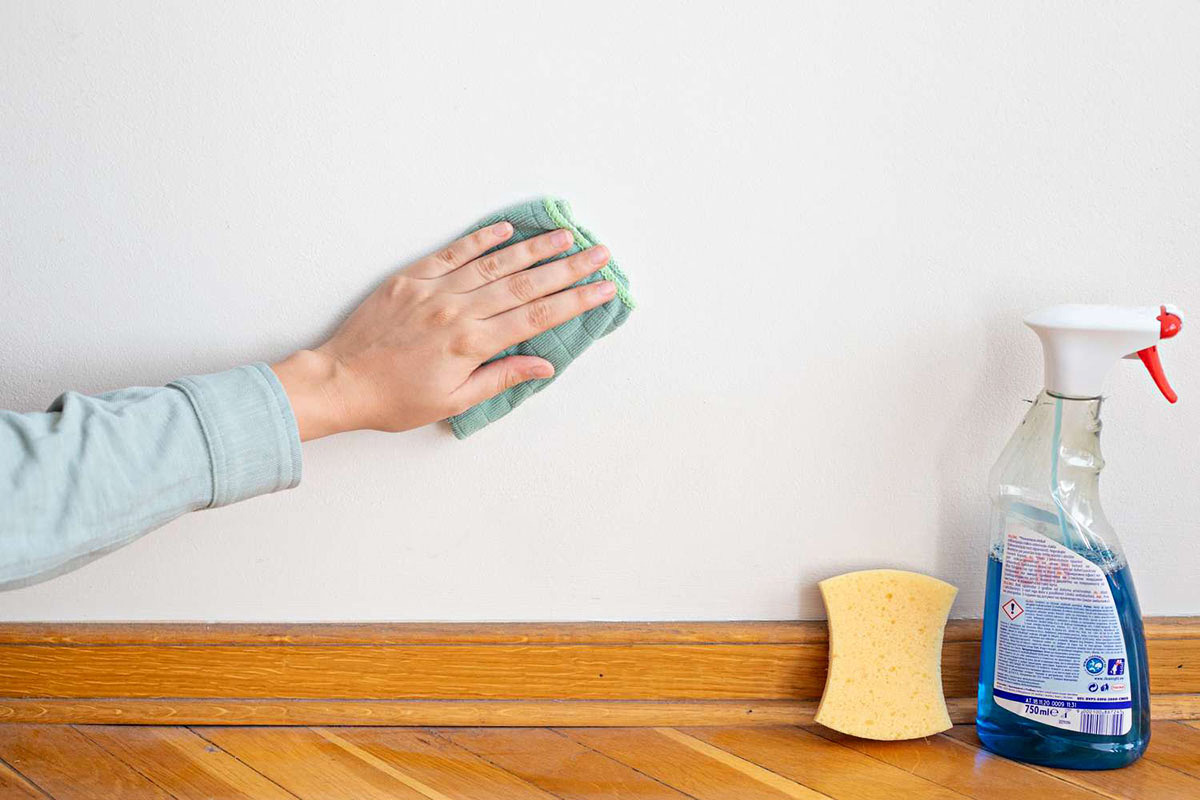
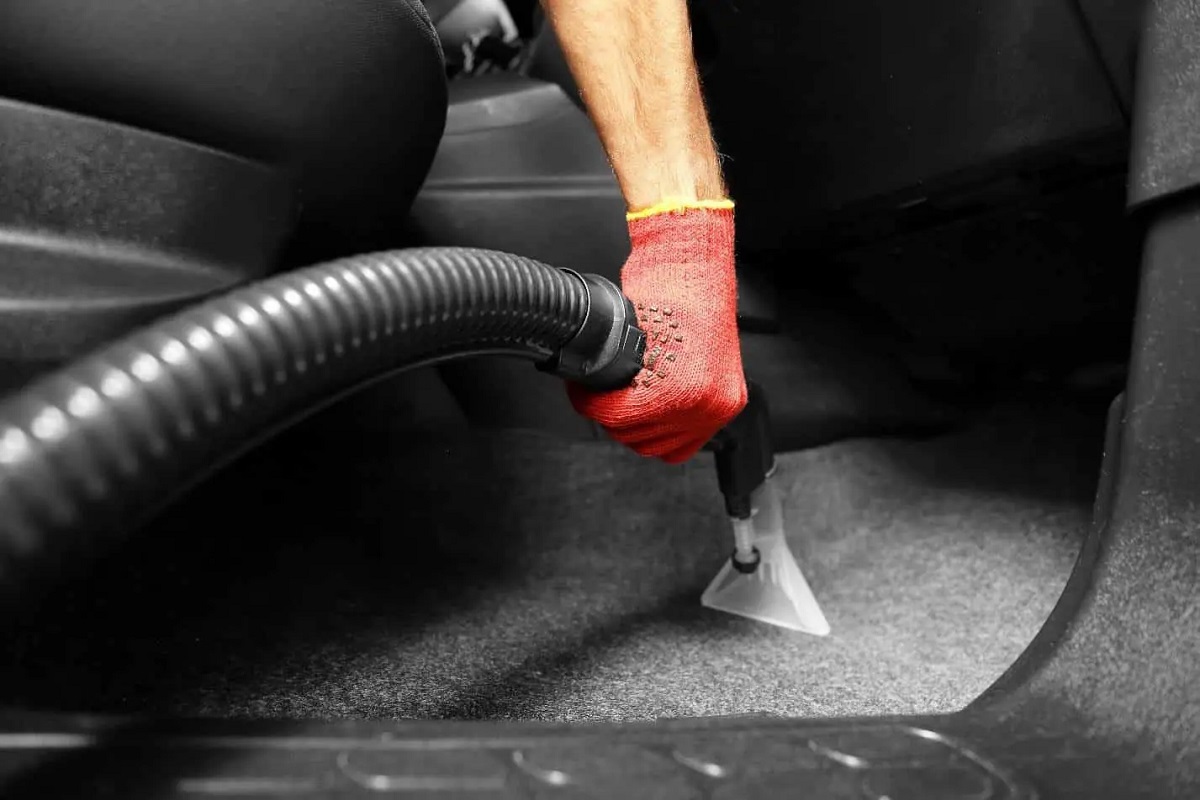
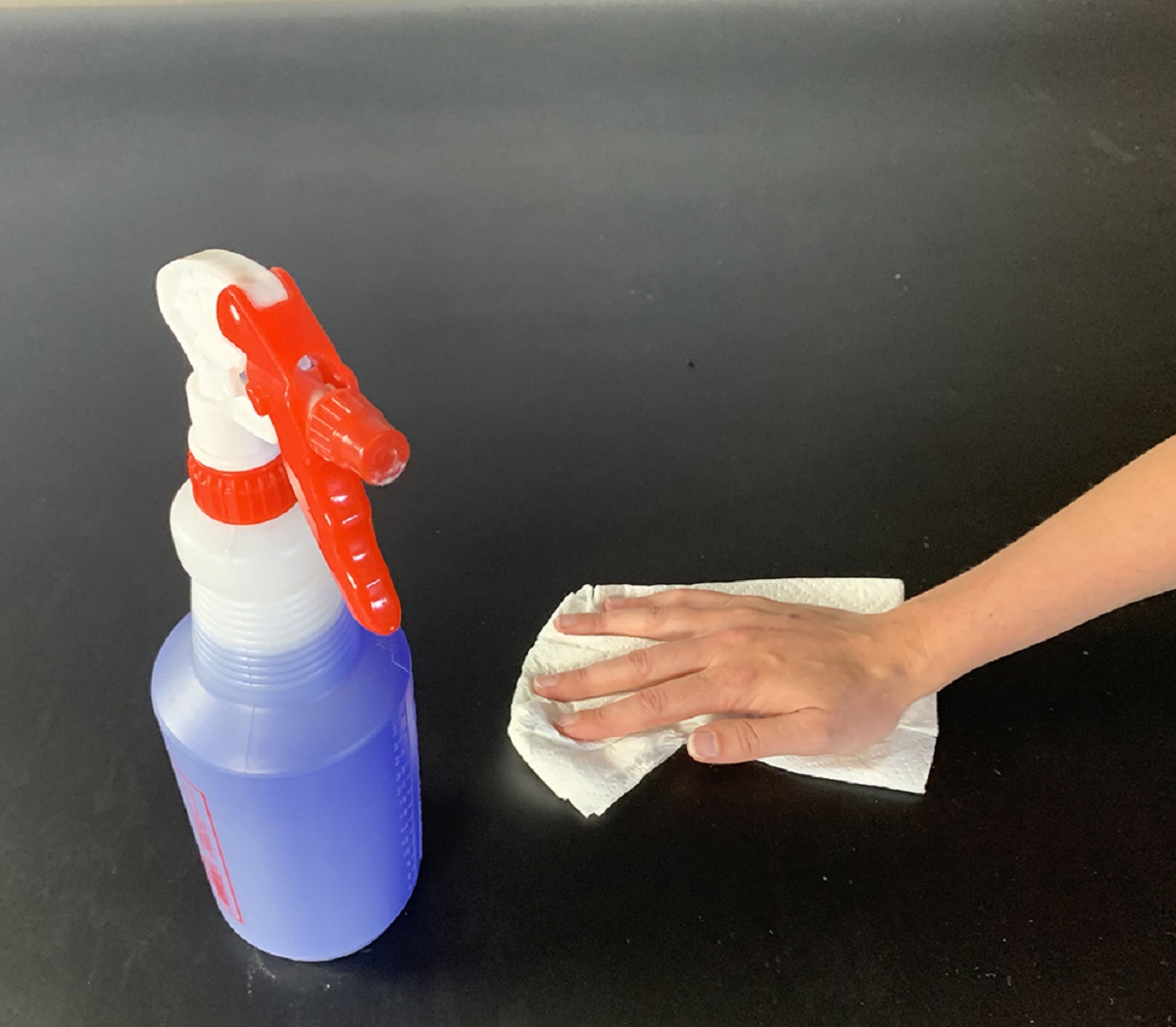
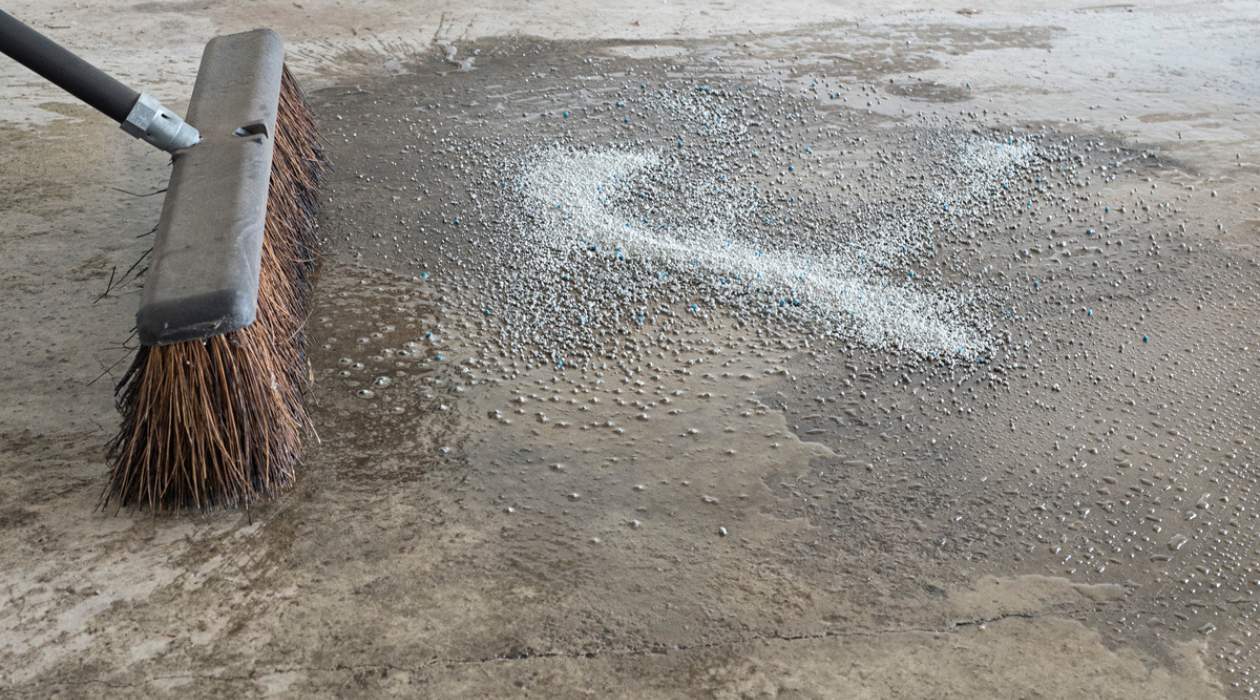

0 thoughts on “How To Clean Oil Off The Floor”